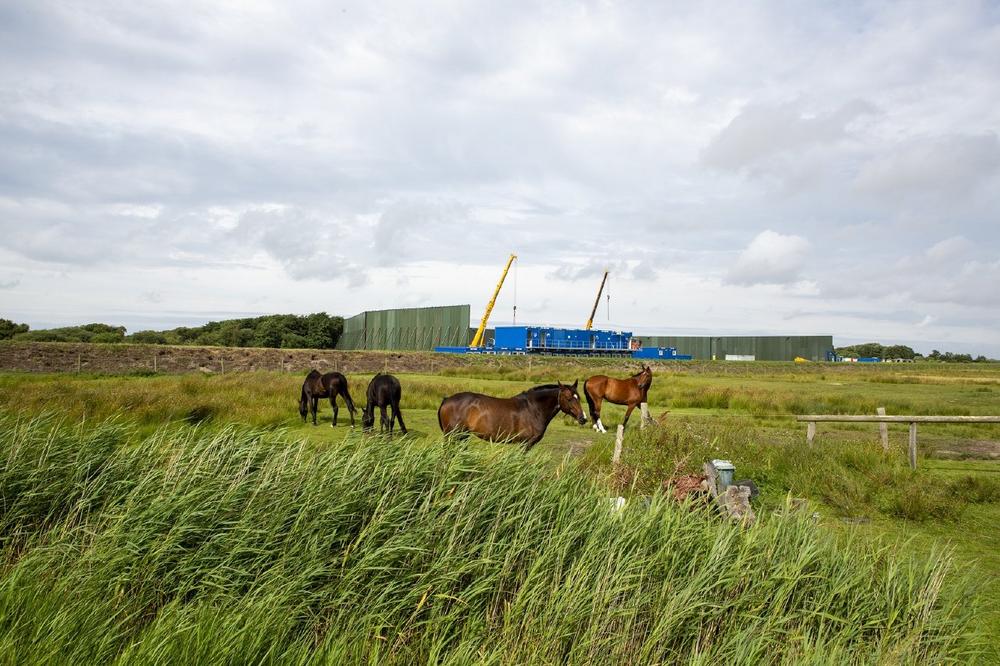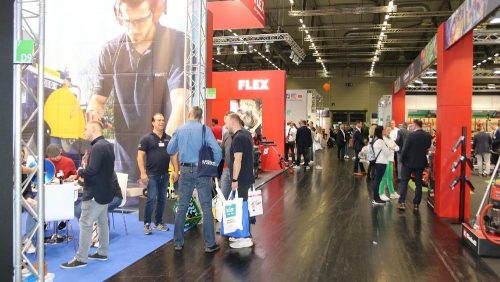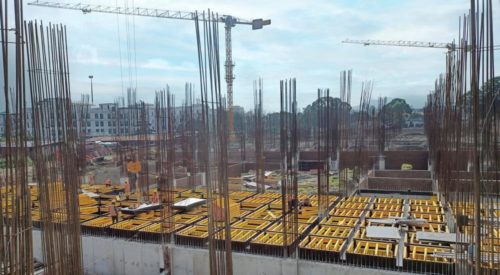
NO-DIG gently brings wind energy ashore
Major project brings green electricity to 4 million people
BalWin1 and BalWin2 are two of the four grid connection systems operated by the transmission system operator Amprion. They run from wind farms in the North Sea, via two converter platforms under the East Frisian island of Norderney, to the mainland at Hilgenriedersiel. Each system consists of three parallel DC cables and has a transmission capacity of 2,000 megawatts — enough electricity for around four million people. The contractor, LMR Drilling, must carry out 18 horizontal bores to install protective pipes into which the submarine cables will be pulled later. Construction work will be carried out in three phases: In summer 2025, six HDD bores will be made from the centre of the island towards the southern mudflats and the mainland. In 2026, drilling will continue from there northwards in the direction of the offshore converter platforms. In 2027, the mainland dyke will be crossed. As the sandy soil at the start of the HDD bores is highly unstable, the GRUNDORAM TAURUS is being used to drive casing pipes into the drillable layers at the entry points for guidance.
Everything about this construction project is huge: the construction site ‚At the lighthouse‘ on Norderney covers 14,000 m² and has an additional 8,000 m² of storage space. It is surrounded by a 257-metre-long, 10-metre-high noise barrier. In addition to forklifts and excavators, two heavy-duty cranes are used to transport materials and equipment. The maxi HDD drilling rigs being used have thrust and pull forces of 250 and 450 tonnes, respectively. The south-facing bores on Norderney are 1,010 metres long and the north-facing ones are 1,140 metres long. There are seven water tanks with a total capacity of 850 litres on site for mixing and storing the drilling fluid. To install the pipes and transport materials from the southern mudflats, two huge platforms, known as pontoons, have been anchored there. The casing pipes through which HDD drilling starts on land have a diameter of 800 mm and each one is 24 metres long. Given these dimensions, the 4-metre-long, 4,800-kilogramme TAURUS rammer from TRACTO seems almost small.
Taurus gives HDD drilling a helping hand
Pneumatically driven ramming machines are most used in pipeline construction for the horizontal installation of steel pipes for media or protection. With dynamic pipe ramming, impact energy is transferred directly onto the steel pipe, while soil is collected inside the open-fronted pipe, meaning that obstacles do not need to be completely displaced or pushed ahead of the ram. Despite their immense impact forces, dynamic rammers emit only minimal vibration, enabling their use in sensitive environments.
However, the rammers‘ impact energy also helps to successfully complete complicated horizontal directional drilling (HDD) operations. With these HDD Assist & Rescue methods, it is possible to support pipe pulling with dynamic impact force, loosen stuck drill pipes, and ram casing pipes for HDD drilling, a process known as ‚Conductor Barrel‘. Dynamic pipe ramming is reliable and accurate because the ramming machine is connected directly to the steel pipe to be driven and aligned axially behind it. Accuracy is also the decisive factor with the TAURUS on Norderney: ‚It is very important that the casings are ibuilt in precisely, to ensure that the bores can be drilled properly,‘ explains LMR project manager Jorn Stoelinga.
As this is the first time that LMR will carry out the ramming work for this project themselves using their own TAURUS, TRACTO has sent two specialists to the construction site to oversee the start of work in July 2025 and instruct LMR’s colleagues on the details.
Work within given time slots with minimal disruption
The dune and mudflat landscape of Norderney is part of the Lower Saxony Wadden Sea National Park. To protect this highly sensitive ecosystem, construction work in the summer of 2025 may only take place from July to September. "This area is home to specially protected bird species that breed in the spring. And from September onwards, there is a risk of storm surges," explains Henning Gründemann, who is overseeing the construction project as project manager at Amprion Offshore GmbH. The construction work itself is subject to strict regulations and ’nature conservation supervision‘: "Special measures apply in order to protect nature and the environment as much as possible. First and foremost is the zero discharge principle. This means that no substances from the construction site may enter the environment," says Gründemann, adding: "The trenchless construction method complies with the minimisation principle. "We opted for the HDD method here because it reduces the environmental impact to a minimum with its limited construction areas."
Norderney also is a popular holiday destination that gets very busy during the high season. Campsites in the dunes, some of which are next to the construction ‘At the lighthouse’ site, are fully booked too. To minimise disruption to holidaymakers, the noise barrier was erected, and it was agreed that pipe ramming would only take place between 8:30 a.m. and 1:00 p.m., and again between 2:00 p.m. and 7:00 p.m. Driving steel pipes at full thrust is not a particularly quiet process. As with all operations in this project, the ramming works were precisely timed. Six days in July were allocated for this, i.e. one day per casing. The LMR team had the complex preparations well under control, and the installation of the steel pipes towards the southern mudflats began on 22 July as planned.
The 24-metre-long steel pipe casings consist of two 12-metre segments, each of which was welded together while work was in progress. To correspond exactly to the course of the HDD bores, they had to be driven in at an angle of exactly 14 degrees and in the intended direction of the bores. LMR had built a mobile, 6-metre-high structure made of steel girders to serve as a launch pad. With the aid of a heavy-duty crane, a pipe segment was first placed in the guide rails, then the TAURUS rammer was positioned behind it and aligned with centimetre precision according to the machine operator’s instructions. Next, impact segments were mounted in the opening of the steel pipe and firmly connected to the rammer. Once the first 12-metre segment had been driven deep enough, impact by impact, partly at full thrust, the rammer was detached, the second segment was welded on, reconnected to the TAURUS, which had been repositioned, and driven forward into the drillable soil layer.
Strong performance of one casing per day
This procedure took one working day and was repeated without any problems on the following days. The TAURUS was able to transfer its full thrust of 18,600 joules to the steel pipe, with the team mastering the operations without difficulty. “Thanks to the training provided by TRACTO’s specialists, our employees were able to familiarise themselves with the ramming technology very quickly,‘ says Jorn Stoelinga. Felix Buntkiel, who will be supervising the ramming work at LMR in future, confirms this. ‚TRACTO provided us with excellent support during this initial deployment.‘ Unlike with conventional ramming, the casing pipes on Norderney do not need to be emptied separately. The soil remaining in the pipe is removed by the drilling fluid during drilling. This enabled one casing to be installed per day, including all ancillary work. The actual ramming process took only three hours each time. As a result, the noise disruption for holidaymakers was much lower than the time slots allowed for.
Due to the tight schedule, LMR began setting up the two maxi HDD drilling rigs while the third casing was still being installed. Once the pilot bores have been drilled along the specified cable routes, the steel casings will be removed and the cable protection pipes will be pulled into the bore channels from the southern mudflats. The steel pipes will be reused next year to install the casings in the northerly direction. The two protection pipe strings will then be connected by sleeves at the drilling entry points and the power cables will be pulled in. The cables will be permanently accessible via the sleeve pits. The grid connection systems will be commissioned in 2030 (BalWin1) and 2031 (BalWin2), which is one and two years earlier than planned, respectively. Trenchless technology makes this possible.
Expansion of offshore wind energy – potential for pipeline construction:
The switch to "green" electricity is key to the energy transition. The COP28 World Climate Conference has set a target to significantly increase renewable energy capacity by 2030, which will affect the global demand for wind energy. Through the Renewable Energy Directive (RED III), the EU has set binding targets for expanding green electricity, including achieving a 42.5% share of renewable energy in total energy consumption by 2030 (with an interim target of 45%). All Member States have defined specific expansion targets. In Germany, for instance, the aim is to increase offshore wind energy capacity to at least 30 gigawatts by 2030. Great Britain, which is not an EU country, is also aiming to achieve a clean energy supply by 2030 through the substantial expansion of offshore wind energy, with a target of even up to 50 GW of capacity at sea In order for the power produced to reach the grid, new offshore grid connection systems, such as BalWin1 and BalWin2, must be constructed, and the distribution networks on land must be expanded. This presents significant opportunities for pipe and cable construction companies, particularly those offering sustainable solutions with trenchless technology.
TRACTO
Paul-Schmidt-Straße 2
57368 Lennestadt
Telefon: +49 (2723) 808-0
Telefax: +49 (2723) 808-180
https://www.tracto.com
Marketing, PR & Media Manager
Telefon: +49 (2723) 688855
E-Mail: anne.knour@tracto.com
![]()



